#Nikon Camera Systems
Text
It only took 9 years .... American Dipper (Cinclus mexicanus)
At last after a 9 year wait!
The first time I saw an American Dipper was in November 2014. I was on a Bald Eagle workshop with Moose Peterson in Haines, Alaska.
It was a very dull and dark day and I saw this tiny (compared to Bald Eagles) quickly working along the river bank. I asked what it was and Moose said an American Dipper. Of course the light was so poor I couldn’t get a good image. Unfortunately, I did not see it…

View On WordPress
#NikkorZ100400VRS#NikonLove#nikonnofilter#NikonZ9#ZCreators#(Cinclus mexicanus)#@Service.Photo#american dipper#Birding#Jemez Springs#New Mexico#Nikkor Z 100-400mm f/4.5-5.6 VR S#Nikkor Z TC-1.4*#Nikon Camera Systems#Nikon Z 9#Richard King Photography#wildlife photography#www.mothernatureimages.com#www.richardkingphoto.com
2 notes
·
View notes
Text
I'd Love to See the Nikon L35 AD2 Made Into a Digital Camera
This compact film camera deserves a digital version
Nostalgia is a wonderful thing, especially when it has something to do with photography. It’s no surprise that more camera manufacturers are bringing out new models that resemble vintage cameras. Fujifilm’s entire X line is based on evoking emotions with strong retro looks. Sony touched on this briefly with their a7c model. OM System still retains some of the classic styling of their SLRs from…

View On WordPress
#35mm compact camera#Compact Camera#compact camera system#Compact Film Camera#film camera#film compact#nikon#Nikon camera#Nikon L35#vintage camera
1 note
·
View note
Text

This article gets rewritten about every 3 months by someone who thinks they are writing it for the first time.
Also, no chance I am going into that comment section.
I'll make it very simple. Pretty much all cameras are great now. Most smartphone cameras are great.
So you can get great photos with *any* sensor size.
You just have to assess your needs and decide which system will help you achieve your photographic goals.
Full frame sensors make it much easier to...
Shoot in cramped spaces.
Get background blur.
Shoot a scene with bright brights and dark darks. (dynamic range)
Shoot in low light with less noise.
APS-C sensors...
Slightly harder to get background blur.
Not as good in cramped spaces.
Slightly less dynamic range.
Slightly more noise in low light.
Give you near full frame quality at a lower price point.
Micro 4/3 sensors...
Give you lightweight and portable gear while maintaining the advantage of using different lenses.
Can be more expensive.
Great for beginner videography.
Can do decent background blur with a speedbooster and fast lens.
Give you a nice bump in quality over smartphones in challenging circumstances.
Smartphone sensors...
Are always in your pocket.
If you have the money and want to make getting good photos in challenging circumstances easier, get a full frame. Used full frame DSLRs are cheaper than they have ever been.
If you are on a tight budget and want everything a full frame does but don't mind it being about 1.5x harder to do so, get APS-C. If you go with Canon or Nikon, you can choose your lenses in a way that allows you to upgrade to full frame later on.
If you want to use a proper camera with interchangeable lenses but you don't feel like carrying a heavy camera bag with you everywhere, get a micro 4/3. Be warned, these cameras are usually more expensive than APS-C. They often have cool retro styling and try to give you a more fun photography experience. Panasonic M4/3 can be a great entry level videography camera. Fuji has some neat retro film emulation. Speedbooster accessories can allow you to retain some reasonable background blur.
For everything else, just use your phone because phones are great at everything except indoor low light situations.
87 notes
·
View notes
Text


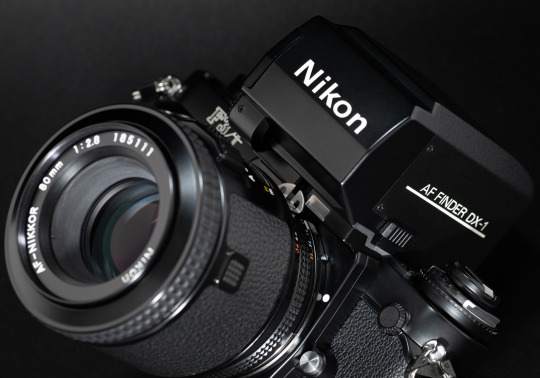

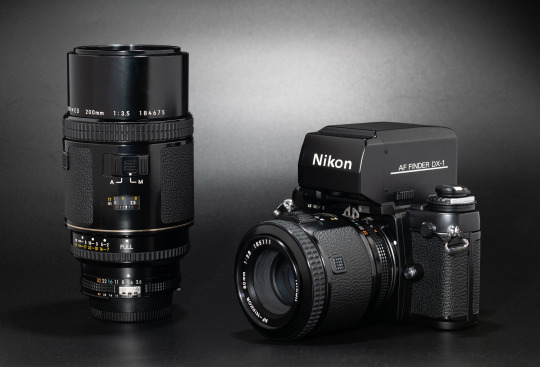
The Nikon F3AF of 1983 – an early, fascinating, ultimately unsuccessful attempt at practical autofocus in a stills camera.
Based on a standard F3 body, it added electrical contacts for two dedicated AF lenses, and a removable, separately-powered DX-1 head, which provided through-the-lens (TTL) autofocus. Focusing elements in the lens are moved by motors built inside the lenses themselves – a concept that is now standard in modern SLR and mirrorless systems.
Basically, take a Nikon F3 and an AT-AT Imperial Walker, smash them together, and you have the F3AF.
7 notes
·
View notes
Text
I went Full-Fuji! (GFX One Year Review)
One year ago, I decided to ditch my Nikon DSLRs for a Fujifilm GFX 50R.
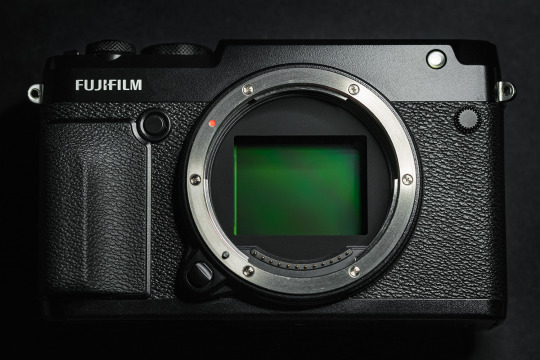
The GFX's sensor is larger than a full-frame sensor with a crop factor of 0.79
A little over a year ago, I still was using a few Nikon DSLRs to do just about anything. For portraits and landscape, I had a very respectable D810. Enough megapixels to provide some room for cropping and a decent dynamic range for most situations. For action and hobby-wildlife I had a D500. A durable mini-tank with performance that to this day would be hard to dismiss even in the light of mirrorless flagship innovation.
However, the question of my camera-future slowly crept into my mind. Was it time to change and upgrade into the Nikon Z system? Switching to a Z7 would indeed have been a sensible move, adapting older lenses while getting the sensor of the D850 in a smaller, cheaper body with an ecosystem of native lenses with the optical quality up to specs for the next decade. On paper and elsewhere, it should have been the obvious choice. Yet my answer to this question was a resounding "no" and I went against reason to set my sights on a Fujifilm GFX 50R. I took that model over the S because I enjoy the rangefinder form factor.
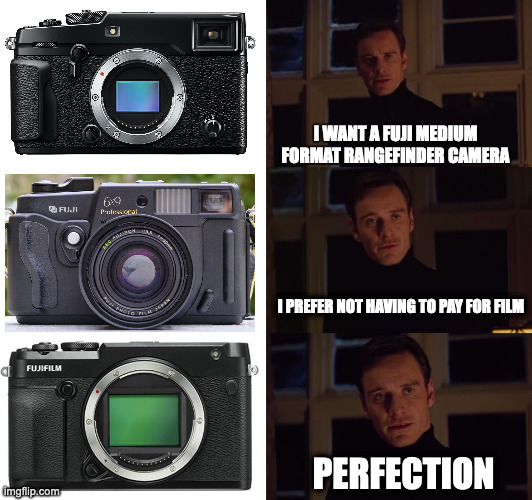
In hindsight, the smartest of all moves would probably have been to remain with what I had, adhering to the ancient photographic wisdom: "lenses are more important than cameras". My kits could have kept me satisfied for probably another 10 years if we are being honest. I could have stayed within the F mount ecosystem and could have taken advantage of its downright insane price drops to get top-of-the-line lenses for peanuts instead of selling the farm on a whim, however carefully considered it might have been.
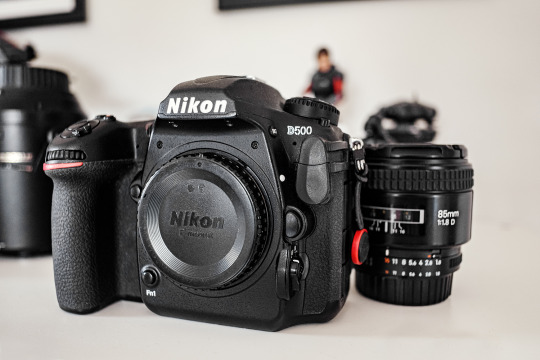
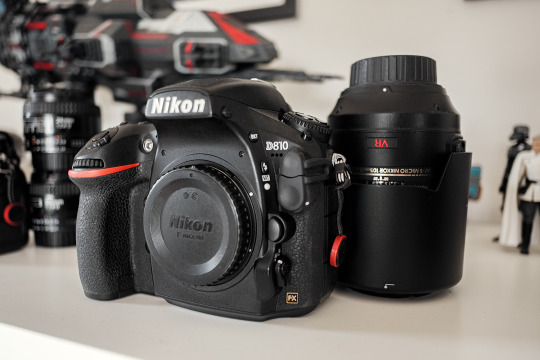
These old and trusty Nikon DSLRs got sold off to finance the 50R
The truth is that after fifteen years of walking the beaten paths camera-wise, I wanted to shake things up. I longed for a change of pace. I felt confident enough in my practice to know what type of photography I would want to engage in for the foreseeable future. I also felt confident enough that I'd be able to answer the call of the occasional assignment using a camera system that would have a non-negligible amount of drawbacks. The challenge even seemed like a fun new variable to add to contracts. Thus, the choice I made for my photographic future has been one born out of love rather than made from a place of reason.
When I think of good photographic memories involving the process — how photography is approached with mind and body — I immediately have two very different ideas jumping to mind and each has an ideal type of tool that best suits it. Neither of these are about efficiency. Neither of these are about performance beside niche-performance, perhaps. But that, is more of an acquired taste and it also comes at a price, but we'll see about that later.
The first idea is an instinctive and spontaneous approach, form of feral and visceral active meditation, akin to Daido's rabid dog method; roaming the streets clear of thoughts and letting the subconscious take the helm. Shooting, shooting, shooting and discovering everything later. No plan, only image-taking. No clear framing, no image-reviewing, no judgement to pass, no threads to weave. Only arrange and make sense later, if there's any of that to find.

Results using the "rabid dog" method, using a Fujifilm X100, 2014
For this type of photography, the Fujifilm X100 was the tool that instantly clicked with me. The "poorman's Leica" is an apt way to describe what the X100 represented when it came out. I got the original 12mp camera in 2012 as a fun but capable toy to bring along my Nikon D700, until the shutter release button (which also is the on/off switch) broke off in 2020 after one power-up too many. I have since replaced it with a Fuji X-Pro 2 with the XF 18mm F2, 27mm F2.8 and 50mm F2 lenses. To this day, such small Fuji bodies are my tool of choice for this kind of photographic mood (and of course, for family pictures).

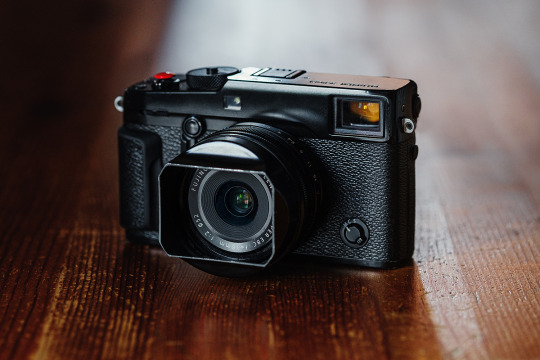
Fuji X100 later replaced by the X-Pro 2 as street photography go-to.
The second photographic process that I tend to naturally gravitate towards stems from my first year of photography school, during which all projects had to be done using film and would have us deal with the whole process (that is to say; shooting, developing, printing, framing, and displaying our work ourselves). It is with nostalgia that I look upon the memories from that time.
There sure is something inherently different in figuring out what to do with the exposures one has left on their film than being able to inconsequentially shoot within two hours three thousand pictures through which you can almost immediately browse. The latter is of course more practical and a welcome technological improvement, but the former brings an unhurried and deliberate focus that I find both refreshing and appealing.
When I think of my strongest recollection of touching the quintessence of the analog experience, the days of using my Mamiya 645 immediately come to mind. Such sluggish, heavy-as-a-couple-bricks box-machines compel one to being careful and purposeful every step of the way. I need that too.

Mamiya 645 Super, since sold to finance GF lenses.
I have for the longest of time considered getting a more serious medium format camera but some quick-math with the price of film, chemicals and photographic paper made me realize that digital medium format was actually much more worth the investment while most definitely retaining some of the core characteristics of its analog counterparts. My love for the film process couldn't hold up against all the advantages of going digital, especially when buying second-hand.
Using medium format always felt like journeying inwards. It has allowed me to spend long hours in daydreaming-states paradoxically laced with an acute awareness of my surroundings. When thinking about medium format, I can recall the soul-washing quality of some of the winds that swept my cheeks while I was standing next to the tripod waiting for the exposure of the 50iso film to finish.
States of contemplation. Another kind of active meditation?
Of course, any camera can provide this type of feeling, but of all of the digital cameras available, medium format is the one type that will weigh you down the most and dictate the pace you work at.
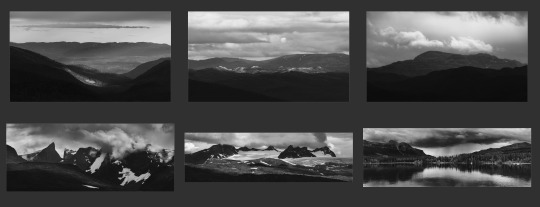
Telepanoramas created with the Fujifilm GFX 50R
Notice how these two ideas are almost the ends of a spectrum?
The first one is nervous and agitated, highly reactive, while the other is composed, meticulous and invites introspective fugue-states, yet they both share one vital element in the way that I approach them in that they take the practical considerations out of the picture to leave more space for what is going on within me.
The setting up of the camera or lack thereof becomes an excuse for something else. Maybe it isn't a surprise, that my adhd-ridden brain experiences this inexorable attraction for both these approaches. For they are in essence, two sides of the same coin, with each side matching different, specific and fluctuating needs.
Let's dive in!
After selling my DSLRs, I started looking for a good second-hand candidate. After a month or so, I found a barely used GFX 50R sold with a 50mm 3.5, a couple additional batteries and an L-bracket to boot. The price was rather attractive for the bundle, so it seemed like the time to take the leap. After a short but excruciating wait for the package to arrive, I finally was able to join the larger-than-35mm-sensor club.

How it started
My first few months with the camera had me immediately blown away by the difference in output. The higher resolution and the sensor's qualities made the (very much existing) noise hardly noticeable when downsized to small printing or screen-viewing sizes. What also immediately struck me, was the looks of the images the camera produced. Images taken with the GFX feel more "3D" to me.
It is a very peculiar and hard to describe feeling. I suspect it is a combination of factors; the depth of field of the larger sensor and the very smooth transitions between what's in focus and what is not that it permits, the colour depth, and the quality of the optics. I've seen many Youtube reviews, read forum threads or been in discussions on Discord about GFX cameras where people (who more often than not don't own one) will maintain that these qualities don't exist at all. After a year in the system I can confidently state that they're wrong.
I can't really put my finger on what causes these differences as I am not as tech-savvy as I could be, but it is still clear as day. To use a pretty apt analogy, I would say that the difference between full-frame and (crop) medium format is akin to the difference between aps-c and full-frame cameras. Are they deal-breaking? Not necessarily. For some people they can be. Are they noticeable? Definitely. It is especially funny to me to see medium format cameras being dismissed by such a many full-frame shooter who at the same time, is constantly bashing aps-c sensors.


Don't you love to pixel-peep? Omnomnom (imagine with 102mp!)
This being said, I will always fully stand by the statement that full-frame cameras are the more sensible choice as they are better all-rounders by design. High-res cameras like Sony's A7RV or equivalent are also better high-iso performers than the aging IMX161 sensor that the GFX 50 series uses, which sees its operational limit at around 6400iso (but the GFX 100 would be another matter entirely). A top-tier full-frame camera is evidently more practical, lighter and cheaper without any deal-breaking image quality difference to what the medium format niche can offer. When all costs are factored in, the choice would seem self-evident. If you consider medium format, it should be understood that you know this before committing to any bigboy sensor. Or don't heed this and make people who buy second hand happy, as GFX gear loses almost one third of its value once it hits the second hand market (a consequence of too many people jumping on the medium format bandwagon only to realise — way too late — that it wasn't for them).
Are we cooking yet?
I need to talk about the GFX's files for a little bit; I'm a raw shooter only — which hopefully you'd have guessed — (in my opinion anyone buying into a medium format to shoot jpeg must have cognitive issues or too much money, or possibly both) and I have to say that when I opened the raw files to give the sliders their very first +100/-100 or +3/+4 EV from base iso (or any combination of these) I was utterly floored by how well the files could handle such an ungodly beating.
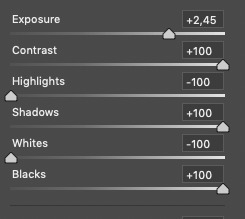
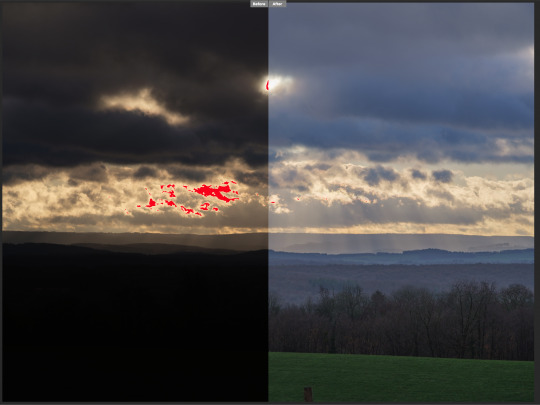
This isn't a joke, I promise.
This type of camera makes the slider memes come true, to a point where for the first few months, my ability to edit properly was severely impaired by the glee I experienced while pushing everything way too far. I believe it is not an uncommon symptom at the start of a medium format journey. It takes a while to come back from that and simply be able to tell yourself "ok here, maybe less dynamic range would be a good edit". I'm getting better at this as I consciously try to avoid overcooking.
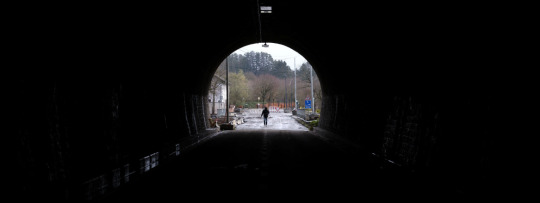
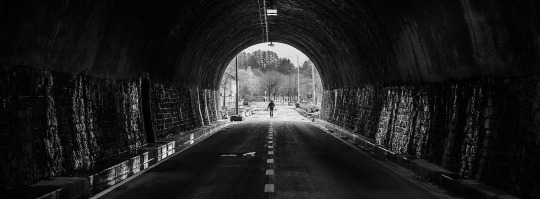
Clean recovery? Can do!
On the image-taking side of things, the major change for me with regards to file-handling is that I'm almost systematically exposing for highlights now. Adding 3EV and boosting shadows in post when shooting at low iso is inconsequential in terms of image quality as there won't be any visible noise whatsoever on the output, unlike my aps-c cameras that will show noise even at base iso. Similarly to many other aspects medium format manages well, this is something I got used to very quickly.
To adapt or to not adapt, that was the question, here's my answer:
At first, I tried adapting my old Mamiya 645 lenses to the 50R. It was useful in the sense that it allowed me to enjoy different fields of view at no cost but it quickly felt like a plaster on a wooden leg. I'm not someone who enjoys the manual focusing as a default and I've grown more and more intolerant of the optical flaws of older lenses as time went by. I realised that it wasn't a viable long term solution for me and quickly chose to sell all my Mamiya cameras and lenses to finance native glass for the GFX.
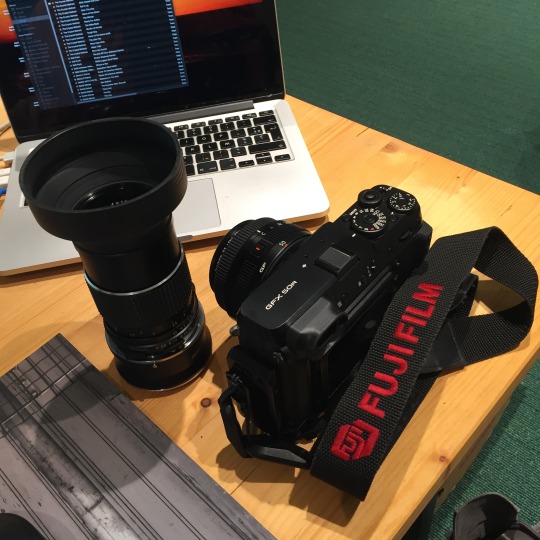
My experience adapting? It was alright but not at all ideal.
Which lenses then?
Getting into the GFX system I promised myself I would make no compromise whatsoever on optical quality and directly aimed for the 250mm F4 (mainly for tele-landscapes) and 110mm F2 (mainly for portraits). The grind felt long but it really wasn't, as I managed to secure both lenses from the second hand market within 6 months. It is only later that I added the 35-70mm "kit" lens to my arsenal to fill the wide-angle gap I had. As I seldom feel the need to shoot wider than short-tele fields of views, this is more of a lens of convenience.
The difference between adapting older lenses and using native glass was night and day to me. Two things made this the better choice in my view: first, I've been actively seeking the "clinical" quality of modern optics. I do not care much for the "character" of older lenses especially not if the word is used to help one overlook a lens' unforgivable flaws. Second, while there sure are lenses worth adapting out there, this come at a cost for the adapting to be worth it (the cost of an AF-capable adapter and of course the cost of the lenses themselves) which I saw as a waste of my limited resources. I told myself I wasn't going to make compromises, remember?
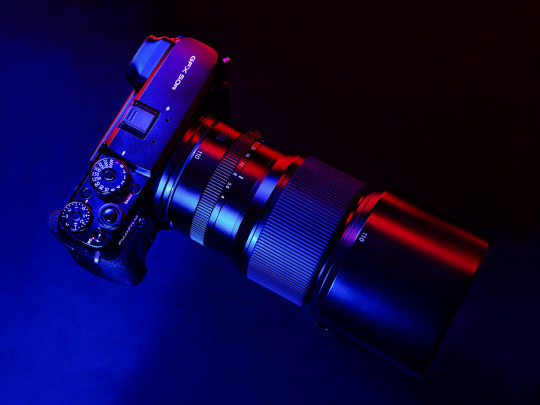

One year after switching, I am now knee-deep into the system, having sold most of my Nikon gear as well as my Mamiya medium format film-cameras to acquire some of the incredibly hard to resist GF lenses.
After a year of transforming a heap of dormant gear and side-gig revenue into new lenses, I also noticed that the representation I had about the worth of money also changed radically when gear was concerned.
A little over a year ago, an XF lens priced 800€ definitely seemed like a steep investment I'd try to find alternative choices for. Nowadays, 800€ is a mere budget lens in my mind. Seeing the price tags of GF lenses doesn't make my head spin anymore and this is somewhat worrisome for the thrifty Dutchman living in the back of my brain.
With the announcement of the 500mm F5.6 lens being in development (a focal length I definitely miss from my Nikon days, I'm a sucker for ultra-telephoto landscape photography), I fear I will manage to push my monetary boundaries further back yet, which I will help achieve by selling my X-T3 video-oriented kit.
APS-C: you're dead to me.
An unforeseen consequence of my GFX switch was that my aps-c cameras were pretty much relegated to the bottom gear drawer and seldom used barring a few notable exceptions (such as a wedding gig) where the need for its autofocusing speed was greater than the need for image and file quality.
To reuse the analogy I made earlier; my X-Pro 2 and X-T3 have become to me what a micro-four-thirds camera would be to a full-frame camera user. Getting into Fujifilm's medium format system prompted me to think about how I use my cameras and to what end. The realisation that there is a clear split in my photographic approaches I evoked at the very beginning of this article is the result of that thought process.
Although I will sell my X-T3 because it feels superfluous and I want to stop my video gigs completely, (and because my need for GFX lens money is still great), I would never part with my X-Pro 2 nor the few XF lenses that I have as they serve a totally different purpose to that of the GFX's.
Having a compact, fast, discreet yet still capable camera that can be casually put into a pocket is an advantage that I would be a fool to part with. The X-Pro is a more practical choice for street-photography, documentary in less-than-favourable conditions, as well as for family pictures, when packing a brick of a camera and two bricks worth of lenses for a walk in the park in suboptimal weather would be met with a tired roll-eye from my spouse.
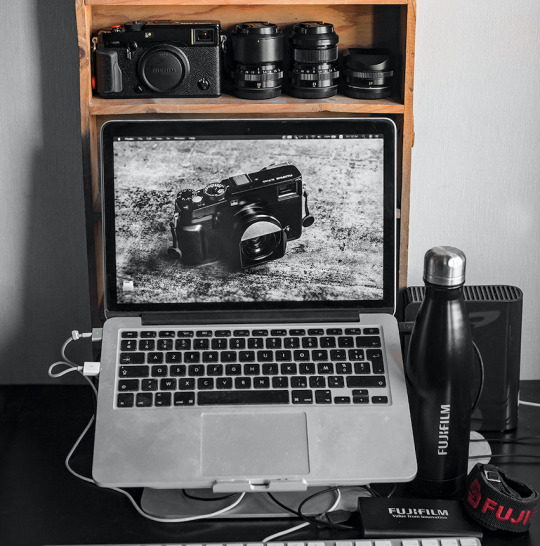
My dear X-Pro, I'm Never Ever Gonna Give You Up
Of course there have been many occasions for which I have chosen to take the challenge and went into these situations with the GFX. However, I wouldn't want the GFX to be the only option at my disposal in such cases.
For example, during the last wedding I shot, when the dining room got darker and the guests started moving around a lot (and dancing), the switch to aps-c cameras was absolutely necessary because of how difficult it was to consistently get acceptable results in poor light and with subjects making erratic movements. When you are held under a result-delivering imperative, you have to be able to honour it.
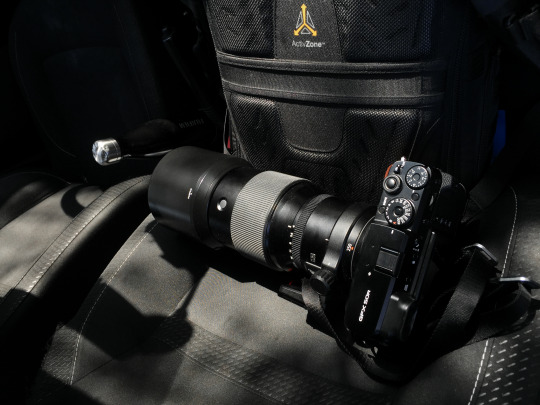

Packing a Fuji GF or Fuji X kit can be a slightly different experience
"Megapickles don't matter!"
This was an idea that I lived by just a few years ago. I changed my mind. I still believe that megapixels don't matter when you don't have them. Just like one should shoot with the camera one has / is able to afford. It doesn't matter in the grand scheme of things but all these technical niceties just make one's life more comfortable. Cropping, denoising through file reduction algorithms, or enjoying detail endlessly because one can, these are just the icing on the cake. I just happen to like my cakes with more icing than cake now.
Regarding resolution specifically, it's been another area in which there seems to be no possible coming back. Nowadays, every time a manufacturer announces a new camera and I discover they plan to fit it with a 24MP sensor I dismiss the information entirely. It doesn't register anymore. 32-36 is the new 24 in my mind now and it's sometimes difficult to come back from those expectations.
This being said I have no issue using lower resolution aps-c that I own and could perhaps even have fun with a X-Pro 1 because then the output quality wouldn't be my prime concern. It is only concerning new releases that my interest dips firmly for "low" MP cameras.
Did I tell you that medium format AF sucks?
Before I conclude this one-year review, let me hammer this point in with a two-handed mace; it can't be understated, especially for the GFX 50 series which uses contrast detection — the autofocus will throw you back to the early 2000s. Be ready to be stuck on single point, single AF mode because that's the only thing that will be consistent enough.
Then let's not forget other factors that add to the bad and make it worse; the shutter lag is half a second, the sensor readout speed is 1/4th of a second, and the time the shutter takes to clear the large sensor in combination with the camera's high resolution means you'll need higher shutter speeds in order to get rid of motion blur when shooting handheld (count about one stop faster than usual). Those would be valid reasons as to why a less niche camera system makes more sense for a lot of people.
The final comment:
Despite its sometimes dramatic drawbacks, I definitely have found the pleasure I sought when I originated this system switch. The change and the adapting my process is engaging and makes me think more about what I do, what I use, when and why. This is a win on its own.
All in all I feel like I am still at the very start of my journey though I've had the opportunity to test my GFX 50R in a wide array of situations in the past year (portrait, landscape, documentary) it seems like the way forward is clear and also opened for plunging deeper into this incredibly fun (but needlessly expensive) rabbit hole.
The upcoming 500mm, the prospect of finding an original GFX 100 (with its weirdly appealing tiltable EVF) are ideas that will — for the foreseeable future — definitely keep pulling me back in (and emptying my pockets).
Fun! Fun! Fun!
8 notes
·
View notes
Text
Sony RX100 VII Thoughts After Two Months


PROS:
Stacked sensors are the future. Well, technically the present considering that Canon, Nikon, Sony, Fuji, and OM Systems all use stacked sensors in their top of the line cameras. Either way, finally getting to experience shooting with one on a daily basis has made me want one in pretty much any camera going forward. The benefits are twofold: Not only do you get shutter speeds up to 20 frames per second, and without a mechanical shutter flipping in the way obscuring your view in between shots, but you also get no rolling shutter while doing it. Pretty much every Sony camera can shoot 10 fps bursts with the silent shutter, but any movement can give you a jello-like effect since the sensor reads out so slow on non-stacked cameras. The only con, at least on this camera, is that you can’t shoot flash at higher than 1/100 with the electronic shutter. That’s still plenty fast for a lot of stuff, but well below the 1/2000 you get when shooting the mechanical shutter.
The fast frame rate wouldn’t make much of a difference if the camera was bad at autofocusing, but this camera is great at it. It has a lot of the same fancy focusing stuff that my full frame Sony has like human/animal eye autofocus and all the tracking modes I’m used to. It actually makes the camera pretty solid for wildlife if you can get close enough at the 200mm end.
Speaking of that, the 24-200mm equivalent is a great range, and one that I missed a lot since I traded away my Tamron 28-200 to help cover the cost of my A7RIV. The small size and extra 4mm on the wide end actually makes it even more convenient than that Tamron.
Aside from covering a broader range than the 24-70 equivalent lens from the older RX100 cameras, this lens also seems noticeably sharper. The last RX100 model I had, the Mk. IV, just didn’t seem as crispy as this lens is.
It has a touchscreen! It’s wild to think that the previous RX100 cameras I owned didn’t have this basic ass feature, but Sony was very late in putting touch screens in their cameras. Ironically, I don’t really use it in this one because the AF is good enough that I can just do focus and recompose with tracking.

CONS:
It’s still only a 1” style sensor so high ISO isn’t the cameras strong suit. Programs like DXO PureRAW help a lot and let you get somewhat usable images at ISO 6400 in a pinch, but you’re kinda pushing things at that point.
While the lens is sharper and covers a wider range than the older models, it’s also significantly slower. At 24mm equivalent it’s already at f/2.8 where the old cameras were f/1.8. It’s f/3.2 at 25mm, f/3.5 at 33mm, and f/4 at 40mm. From 109mm to 200mm you’re at f/4.5. The relative slowness of the lens combined with the small sensor means that this can struggle getting quality images in low light without a tripod or something.
No USB-C. My Fuji, Ricoh, and larger Sony all have USB-C charging, which is amazingly convenient when traveling. I haven’t really gone anywhere with this camera yet, but having to account for a micro USB cable is annoying since pretty much everything aside from my iPhone uses USB-C.
It’s expensive. Just like my Mk III and Mk IV I got it used so it was cheaper than retail, but the copy I got cost about twice what I paid for the previous models.
Start up time is just a tad bit slower than I’d like. The GRIII and X100V both beat it that regards, albeit those aren’t zoom lens so I have to cut the Sony some slack.

SAMPLE PHOTOS:
(The sample photos were edited in Lightroom Classic and DXO PureRAW2. Also, the sensor creates a roughly 2.7x crop factor, so the 9-72mm lens equates to 24-200ish)

Young Bird | ISO 160. 72mm. f/4.5. 1/200.
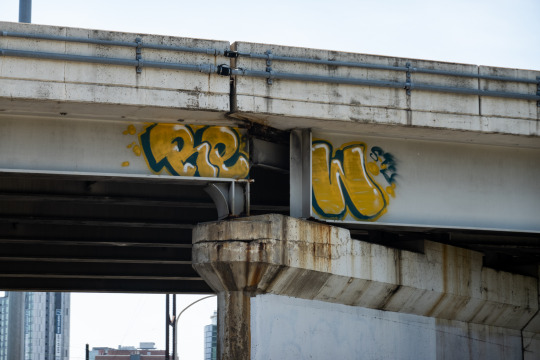
Graffiti Shot from a Car | ISO 100. 33.98mm. f/4. 1/400.
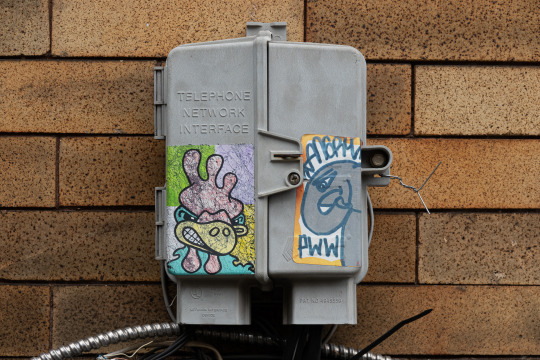
Stickers | ISO 100. 29.67mm. f/4.5. 1/100.
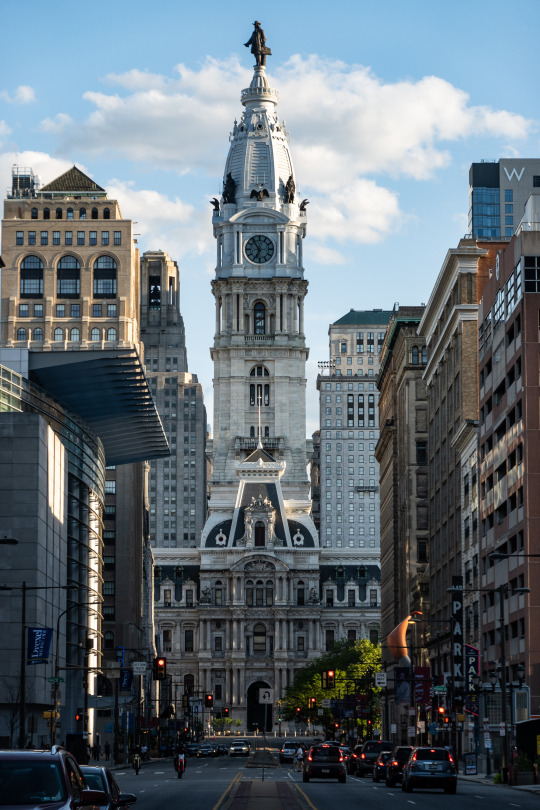
City Hall | ISO 100. 38.13mm. f/4.5. 1/200.
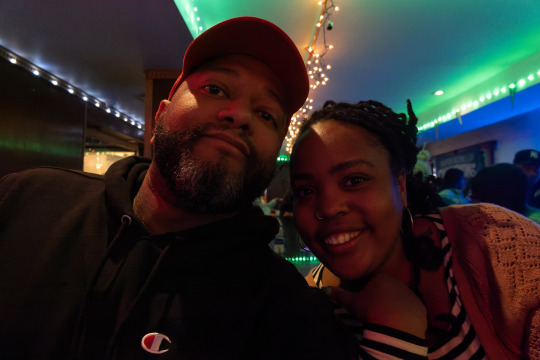
Flip Up Screen Selfie with My Friend Hanae | ISO 3200. 9mm. f/2.8. 1/40.

Zoomed in Graffiti | ISO 640. 72mm. f/4.5. 1/500.

Fishing Store Neon | ISO 800. 28.67mm. f/8. 1/200.
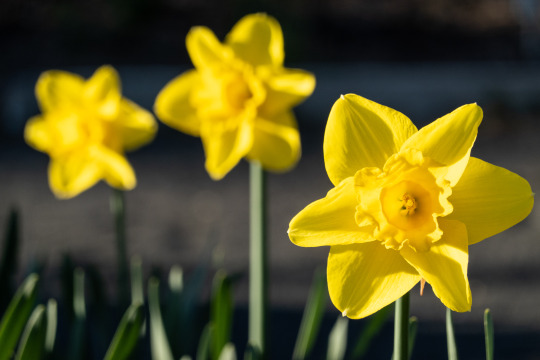
Flowers | ISO 200. 72mm. f/5. 1/640.
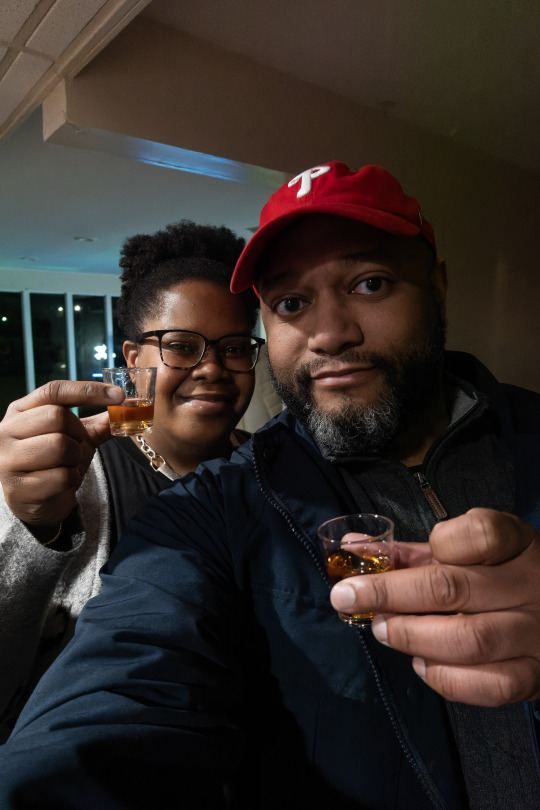
Selfie Shots with My Sister | ISO 3200. 9mm. f/2.8. 1/100.
28 notes
·
View notes
Text
Canyon Lake, TX 2023
I meant to make a post about this trip sooner but never got around to it lol
Anyway, my family and I went to Canyon Lake, TX, in December 2023. It's about 40 miles from San Antonio for those who aren't familiar. There are not a lot of activities to do here; it is mostly just a pretty place to go and relax.
Camera info: Nikon D750, Pentax K1000, Instax mini Evo
Day 1 12/17/2024
After about a 4-hour drive, we arrived at our Airbnb and got unpacked. Even though we weren't near the lake, we still had an amazing view from the house: huge hills covered in trees whose leaves ranged from green, red, and yellow.
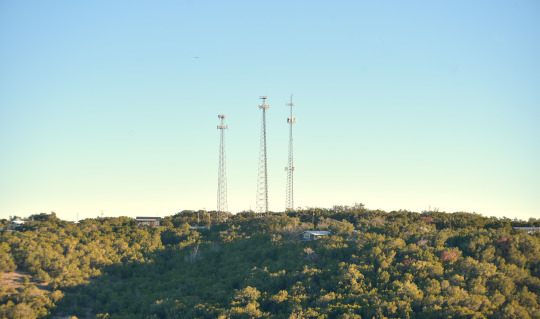
The last time I was in the Texas Hill Country, I didn't see any deer or other wildlife, but this time I saw some! A group of deer came out of the bushes while I was checking out the rest of the rental house. I grabbed my camera and took some pictures.


I have never been able to successfully take a photo of a deer before. They always run away before I can get the shot, and I'm not really a wildlife photographer, so I don't have the right lens to get close up. But these guys walked up so close to the house deck, all I had to do was stand perfectly still. ^_^
Day 2 12/18/2024
So to start the day, we went to a trail that was behind our Airbnb. We walked around and it had a nice view but it was pretty much just a big circle lol
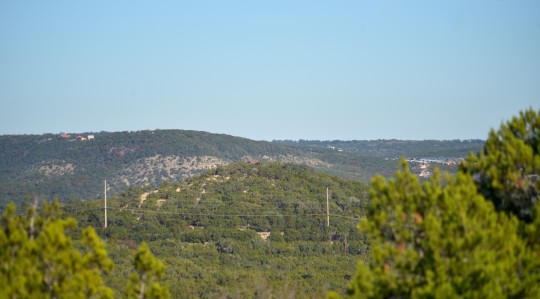
Since there wasn't much here, we went to the main attraction: The Canyon Lake!

Canyon Lake is a reservoir on the Guadalupe River. The construction of the dam was finished in 1964 and serves as flood control and as a water supply for communities near the dam.
The wind was blowing hard against my face as I walked across the dam. When I looked forward, I could hear the wind, the people, and the cars down below, but when I looked to the side and faced the shimmering blue lake, everything went quiet. The way the harsh wind hit my ears literally blocked out everything else.

This gave me one of those feelings that you can't really explain or understand. My mind was completely clear—no weight, no tension, just nothing. Complete non-existence
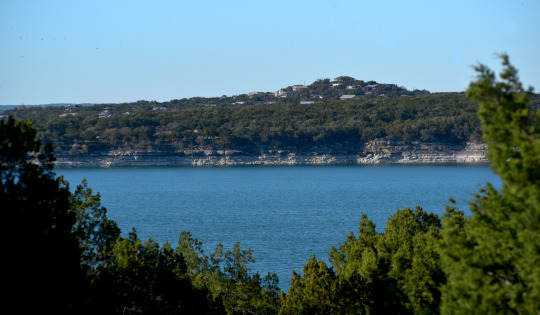

After walking around the lake, I sat on the rocks and took some more photos. The water was so blue and contrasted perfectly with the white rocks.
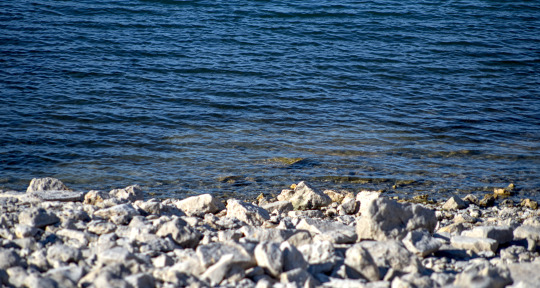
Day 3-12/19/2024
This was our last day, so we decided to go on a cave system tour. Unfortunately, I didn't get any good pictures here since we were part of a larger group and it was quite dark lol. It was very interesting and a nice way to rap up the trip.
This was a very pleasant little vacation, especially since I have not gone anywhere since the start of covid. It was nice to get out and go to a different place lol
Website
Instagram
prints
#photography#original photography on tumblr#original photographers#landscape photography#nature photography#photography blog#tumblog#digital photography#original content#original post#art photography#original art#texas hill country#photographers on tumblr
3 notes
·
View notes
Note
Hi! Gotta say ur work is super cool! If you don’t mind me asking, I was wondering what program(s) you use and what your workflow is like?
hi hi, why thankyou:)
i should do a good post about this cause i get asked now and then
so
I take my nikon d7100 with me wherever I go and usually a couple older film cameras too, so i accumulate alot of photos & videos. portraits, nature stuff (especially bugs), and random stuff

if i wanna glitch it, i generally use photoshop to change the format to something spicy and mosh it with HxD. That program works for video files too. Just replace random chunks of the code or paste in gibberish nothing fancy haha.

for fancy compositing/vfx/animation stuff i use after effects. i like to mess with the colors quite alot. when the mood hits , coffee + audiobooks , dump my recent DSLR or phone footage into AE and play with it, and make little snippets (usually just 1 second long). These are exported as quicktime MOV files into a big folder. luckily i got a custom batch conversion script made by a genius that uses ImageMagick + gifsicle + ffmpeg to process the MOVs into tumblr-sized GIFs . Before I had that, i used to convert them all manually with tons of tweaking to preserve as much quality as possible within tumblr's filesize limitation.

for VHS stuff its alot more annoying. finding a VHS camera in 2014 was the main reason i started posting stuff online haha. i got a General Electric 9-9806 and some others. the ancient proprietary batteries are impossible ($$$) to replace so it's a huge hassle to shoot VHS or even VHS-C out in the wild. for ease and improved control, i shoot digitally and convert to VHS with a magical system. i made a diagram today so u can see

[this involves breathing in alot of dust under my desk as i plug and unplug tangled cables and drop things and spill stuff and fight spiders]
hopefully that makes sense haha, so u can turn any digital video into VHS and then digitize it. everything's quite cheap besides the computer.

it's alot of fun to combine all this stuff, adding VFX and glitches to nice footage and running it through a VCR. but also , sometimes plain video/photo is also nice . i try not to smack too much crap on for the sake of it; ultimately the camerawork should speak for itself [though i am def guilty of making lots of lazy images haha cause i feel pressured to post here as much as possible. hopefully when i'm trying my best u guys can tell haha]
hopefully that answers what u wanted to know :) though maybe u meant 3D which is another topic eheh. this is where most of my energy is going nowadays

46 notes
·
View notes
Text
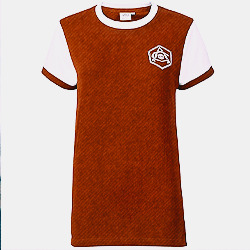


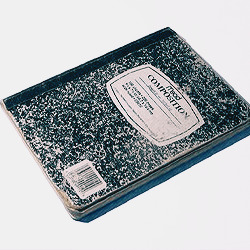



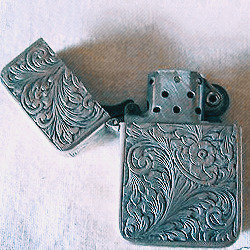

pre-outbreak items emilia still has (left to right):

arsenal football club tshirt. you can take the girl out of islington, but you can't take the islington out of the girl. she's from a family of gunners fans, after all. it's faded now for the most part with a few holes that have been patched up (or not).
vintage silver and gold locket. left to her by her paternal grandmother. rarely takes it off. the chain's been broken a few times too many, so now it's on a length of rawhide instead.
teal green track jacket. originally belonged to her friend calvin from nyc.
composition notebook. always in her backpack, it served as a catch-all for appointments, thoughts, notes for later, and whatever else she knew she wouldn't be able to remember. it's been full for a long time, but there's something bittersweet about the nostalgia of when the most important thing was making sure she remembered to go to the laundromat.
a metro card. why she still has a physical card for the nyc subway system that's been obsolete since the mid 2010's, she couldn't tell you. but she doesn't have the heart to toss it out either. more bright yellow nostalgia.
her leather backpack. down to one strap instead of two, cracked and worn from being out in the sun and rain for longer than the manufacturer probably intended.
two opal rings she found at a flea market in soho. opals are her favorite, and she was always proud of how she haggled to get both rings for the price of one. they reside on her left pointer and middle finger respectively.
zippo lighter. another flea market find from when sharing a cigarette or two on the way home from the bar with her college friends was commonplace.
her nikon f-180. not her most expensive camera or the one with the most features, but it's the first 'professional' camera she'd gotten growing up. still works as it's a manual camera, but finding film has become more and more difficult.
#character. › meta.#images. › aesthetic.#she's going to wear that arsena.l shirt until it falls off of her#smoking mention cw
3 notes
·
View notes
Text

Folded Rocks of Northwest Iran
An astronaut aboard the International Space Station took this photograph of the rugged landscape of the Aladaghlar Mountains in northwestern Iran. Ridges cast shadows in the valleys and other low elevation areas, creating a three-dimensional appearance. Human alterations to the landscape are most evident in riverbeds, where the even topography is easier to build on and navigate.
Natural processes over millions of years have folded rock layers of various compositions and colors into the curved patterns seen here. These folds are produced by tectonic forces operating along the convergent plate boundary of the Arabia and Eurasia plates. The convergence of these tectonic plates causes uplift, folding, and deformation of the colorful rock layers, and subsequent erosion exposes them.
On the left side of this photo, the Qezel Ozan River, a major river in northern Iran, cuts across the landscape. Agricultural fields are visible along the riverbanks tucked between the mountains. The Qezel Ozan also intersects the Zanjan-Tabriz freeway (Freeway 2), a major thoroughfare built on a dried riverbed connecting the cities of Tehran and Tabriz.
Astronaut photograph ISS069-E-89946 was acquired on September 19, 2023, with a Nikon D5 digital camera using a focal length of 400 millimeters. The image was provided by the ISS Crew Earth Observations Facility and the Earth Science and Remote Sensing Unit at Johnson Space Center. The image was taken by a member of the Expedition 69 crew. It has been cropped and enhanced to improve contrast, and lens artifacts have been removed. The International Space Station Program supports the laboratory as part of the ISS National Lab to help astronauts take pictures of Earth that will be of the greatest value to scientists and the public and to make those images freely available on the Internet. Additional images taken by astronauts and cosmonauts can be viewed at the NASA/JSC Gateway to Astronaut Photography of Earth. Caption by Sara Schmidt, GeoControl Systems, JETS II Contract at NASA-JSC and Andrea Wenzel, Jacobs-JETS II Contract at NASA-JSC.
3 notes
·
View notes
Text

ok by a literal miracle i was able to get ahold a new camera system for myself :O a nikon Z6, 24-70 F4 and the 105mm macro! so probably expect more lame pics on your dash 👍
#i wanna go to a local park and take some pics but. i literally just started a stimulant adhd medication and i think i should stay home while#i look for side effects yknow
21 notes
·
View notes
Text
Prothonotary Warbler (Protonotaria citrea)
Spring Bird Migration USA
This visit to Maggee Marsh Wildlife Area in Ohio is the first time that I have seen the Prothonotary Warbler. It is quite different from most other Warblers to look at as it does not have a distinctive cap or stripes along the body. Yes it does have a distinctive shade of yellow, as do many warblers. In fact the name is because the plumage represents the yellow of robes…

View On WordPress
#MaggeeMarsh#NikkorZ100400VRS#NikonLove#nikonnofilter#NikonZ9#ProthonotaryWarbler Protonotariacitrea#SpringBirdMigration#ZCreators#(Protonotaris citrea)#Maggee Marsh Wildlife Area#Nikkor Z 100-400mm f/4.5-5.6 VR S#Nikkor Z TC-1.4*#Nikon Camera Systems#Nikon Z 9#OH#Prothonotary Warbler#Richard King Photography#Spring Bird Migration USA#www.mothernatureimages.com#www.richardkingphoto.com
2 notes
·
View notes
Text
Sony's new phone has a camera with a 1 inch sensor. Here's the comparison to cameras.
That is a crop factor of 2.7x to full frame. Olympus and their M43 system has a 2x crop factor, making the Sony very close, and we all know that the Olys are very, very capable, currently producing the best macro work that has ever existed. Nikon's crop factor on aps-c is 1.5x full frame, Canon's is 1.6x.
This is crazy territory for a cell phone camera to be in, and it means the future is coming way faster than we thought.
The difference will be in the tangible feel, the connected experience of firing an actual shutter, which will never be replicated. The subtle sounds and feel of the mechanics moving within the body. This is what us real photographers will not let go of, or at least have a very, very hard time letting go.
I wonder what will happen when they start cramming crop sensors into phones, which is starting to look more probable everyday. Add the Nikon and/or Sony interface and menu, and we have a new world.
Personally, I'm not giving my full frame gear up anytime soon, but then again, I've been a holdout every step of the way since 35mm.
4 notes
·
View notes
Text

Review: This was beautiful. I've never been so immersed in a story before, it was actually unreal. I don't know you personally, but I'm proud of you, and you deserve so many headpats. ❤❤❤
Review: You recommended I read your favorite child here, and I'm glad you did. I'm loving this. I'm binge reading it.
John is such a sweetheart. And I can absolutely picture Takigawa as a laid back cop. I'm curious to see how things develop with Mai and Naru.
Can't wait to binge read more.
A companion tale set in the Detroit Become Human universe using the characters of Ghost Hunt. Fandom blind story!
John crouched and held the red Nikon up to his eye, taking his time to adjust the zoom just right. His blue orbs squinted as he looked through the small sight and twisted the thick lens. He snapped the shot. A bird’s nest nestled securely in a rusty, disused aerial with an endless sea of disused warehouses sprawled below, bathed in a red sunset. It was quite a breath-taking view. He got to his feet with a sigh and looked around in quiet awe. He’d taken quite a few shots from the old metal rooftops. It was a wonder the area hadn’t been flattened yet. He’d almost fallen through the rusted metal more than once already. He took a moment to return his camera to the protective backpack before taking off again.
His feet made loud metallic clanks on the sloping surface as he ran. He hopped onto the edge of the building before jumping across to a slightly lower rooftop. He looked around for a good route down. Maybe he could even get inside one of the dilapidated buildings. The place had been shut down for almost ten years now, and over the last decade even the security had disappeared. No one ever bothered to come here. Occasionally, there may be a few teens looking for somewhere to party, but they didn’t stick around. He’d photographed some amazing graffiti today, but all of it was quite old. Cracked and faded on rusted metal or crumbling concrete. Even students were going off this place as a secret hideout.
The warped metal creaked beneath his feet as he walked across the rooftop, coming upon an old skylight. He leaned down and ran a hand over the filthy glass. This looked like a possible entry point. The glass itself was still firm, but as he tugged the jagged metal frame, he could see the rusted seal giving way. He tugged on his protective gloves and pulled, feeling the rust turn to powder against the thick material as he heaved. There was a resounding crack as the window came loose and he pushed it aside.
He was careful as he knelt on the edge, using a small flashlight to look down into the darkness below. There was a metal bar just a few feet down, probably from the old lighting system. There were some gangways still standing, though he wouldn’t know how stable they were until he reached them. I just hope the lighting rails will hold, he thought as he got to his feet and took a few breaths. His best bet was to swing from the rail and onto one of the gangways as quickly as possible. He trusted the gangway more than the thin rail. With that in mind, he stepped over the edge.
He let out a small grunt as he grabbed the rail, gasping as the whole thing twisted, spinning him in dizzying circles. He hadn’t factored in chain supports that moved. One hand slipped as he looked around, trying to figure out where to go. At least the rail hadn’t fallen yet. He used his legs to swing the long bar, getting himself closer to the gangway. He released, his feet making a loud crash as he landed. The rail he’d been swinging from collapsed on one side and swung precariously with a high-pitched whine. That was closer than I’d like, John thought, adrenaline buzzing as he edged his way along the cracked surface.
“Agh!” he yelped in surprised as the metal section he was edging along fell through. He grabbed the walkway's edge with one hand, feet kicking as he tried to look around and get a better grip. He was still too high to simply drop to the floor below. Oh no! he thought worriedly, seeing only one way. There was a chain hanging close by. It had probably been used to heft larger loads like some sort of crane or pulley system. After all this time, it may not work, but he had little choice. Lord protect me…
Read more on your choice of platform! AO3, Wattpad, FFN and AFFN!
https://linktr.ee/manga_bird
#dbh#detroitbecomehuman#ghosthuntmanga#ghosthuntfanfiction#ghosthuntanime#johnxlin#naruxmai#monkxayako#johnbrown#koujo lin#mai taniyama#naru#kazuya shibuya#matsuzaki ayako#houshou takigawa
4 notes
·
View notes
Text
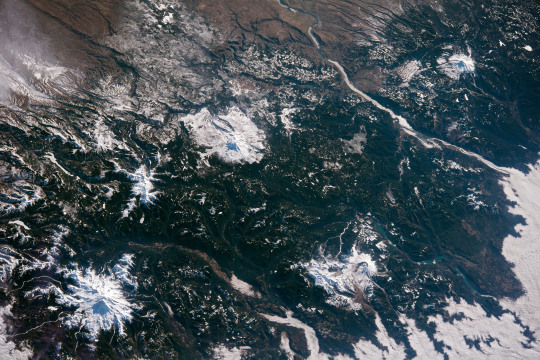
Quartet of Snowy Volcanoes
"
Today’s Image of the Day is part of a series highlighting wintertime photographs of Earth shot by astronauts on the International Space Station. View the full collection here.
The wintertime sky was mostly cloud-free on February 10, 2022, when the International Space Station passed over the Cascade Mountains. Four of the range’s prominent volcanoes—Rainier, St. Helens, Adams, and Hood—were on full display that day when an astronaut on the orbiting laboratory took this photograph.
A ridge of high pressure offshore brought drier-than-normal conditions to much of the U.S. West for the first half of the month. Such high-pressure systems can cause the air aloft to sink, eliminating high- and mid-level clouds. They can also lead to temperature inversions, when warm air above acts like a lid and traps cooler, denser air close to the surface. As a result, low level clouds and fog can form.
Over several days in February 2022, dense fog hung in the lowlands between the Cascade and Coast ranges in Washington and Oregon. Some of that fog is visible in the bottom-right corner of this image where it filled valleys along the west side of the Cascades. Note that north is oriented toward the bottom-left of this image.
The dry spell followed an especially wet autumn and early winter in 2021-2022, bringing ample snowfall to the Cascades and its eastern slopes. Snow still covered the higher elevations and eastern slopes at the time of this image.
Even in summer, the iconic volcanoes are still capped with white snow and glacial ice. Mount Rainier, the range’s tallest peak at 14,410 feet (4,393 meters), contains more than five times the glacier area of all the other Cascade volcanoes combined, according to the U.S. Geological Survey. Mount Baker, a volcano located about 130 miles (210 kilometers) north of Mount Rainier and beyond the scope of this image, comes in second.
Astronaut photograph ISS066-E-140837 was acquired on February 10, 2022, with a Nikon D5 digital camera using a focal length of 130 millimeters. It is provided by the ISS Crew Earth Observations Facility and the Earth Science and Remote Sensing Unit, Johnson Space Center. The image was taken by a member of the Expedition 66 crew. The image has been cropped and enhanced to improve contrast, and lens artifacts have been removed. The International Space Station Program supports the laboratory as part of the ISS National Lab to help astronauts take pictures of Earth that will be of the greatest value to scientists and the public, and to make those images freely available on the Internet. Additional images taken by astronauts and cosmonauts can be viewed at the NASA/JSC Gateway to Astronaut Photography of Earth. Story by Kathryn Hansen.

View this area in EO Explorer
Four of the range’s prominent volcanoes—Rainier, St. Helens, Adams, and Hood—were on full display in February 2022.
Image of the Day for December 25, 2022 Instrument:ISS — Digital CameraAppears in these Collections:Astronaut PhotographyWinter from the International Space Station"
Source: NASA Earth Observatory
5 notes
·
View notes
Text
7 Some Tips For Selling Your Best Unused Images To Photographic Libraries
You still need a brokerage account the place trades. Honestly you do not want a stock broker. The fees the brokers ask you for for exactly what are ridiculous considering you got found information yourself. It will be best when found whenever you broker and trading system for your personal personal research. I have one following.
You can't go wrong with the high-end cameras from Canon and Nikon. The models and specs keep changing and improving, but advertising go using one of their professional level models you well have spent your own wisely. I, at time of this writing, am shooting by using a Canon 1ds MKII, a Canon 1ds MKIII, nicely Canon 5d MKII. Just were starting today I would buy the canon 5d MKII.
https://swiftnook.top/ - Computer Control. Many cameras have a USB interface and remote control software. You will actually control the camera from the computer. See advertising can fraud victim to try to your liking, and possibly even program a long while lapse or exposure bracketing experiments.
Write content for your page with literacy levels in go. Not everyone viewing your page will have graduated Harvard with a medical degree and some may have not yet even learned to read longer than the year or two inside. If you wish to expand your audience, you must first produce content they will imformation comprehend.
It is evolving almost daily it it seems. I don't know where not able to Micro planning but we felt it was essential to participate in the advancement. More eggs in more baskets, that's our motto.
You still need a brokerage account the place trades. Honestly you don't need a brokerage. The fees the brokers charge for discover are ridiculous considering you might have found the information yourself. It be a smart idea to found whenever you broker and trading system for very own research. I have one following.
Submit your portfolio to related photography sites, directories and discussion boards. You can do Google searches brand new cars directories or photography resource pages clean drinking water . sites to promote your paintings.
1 note
·
View note